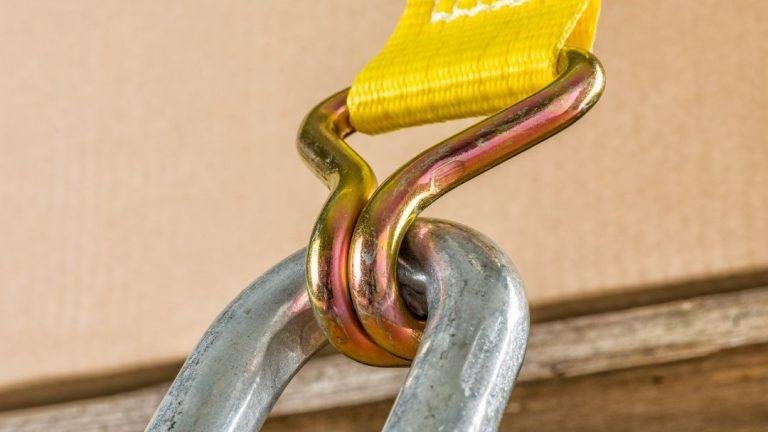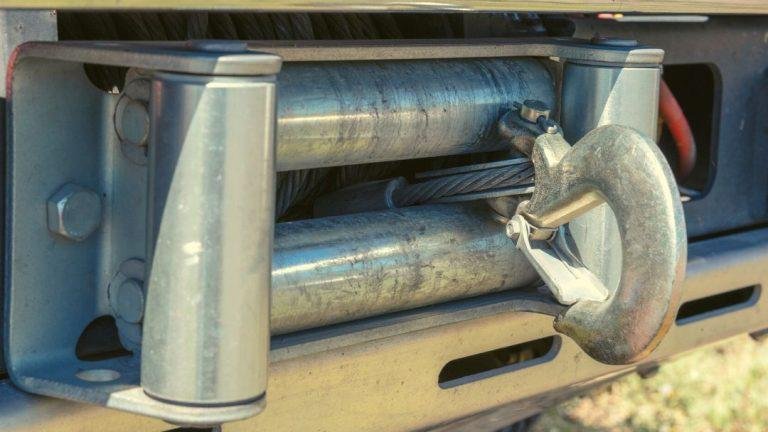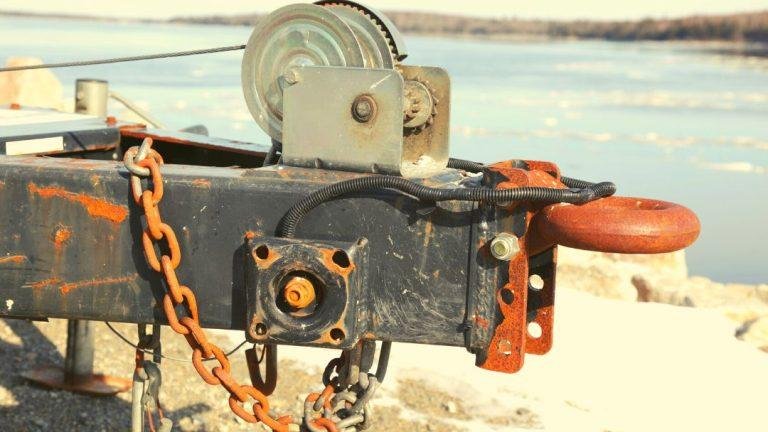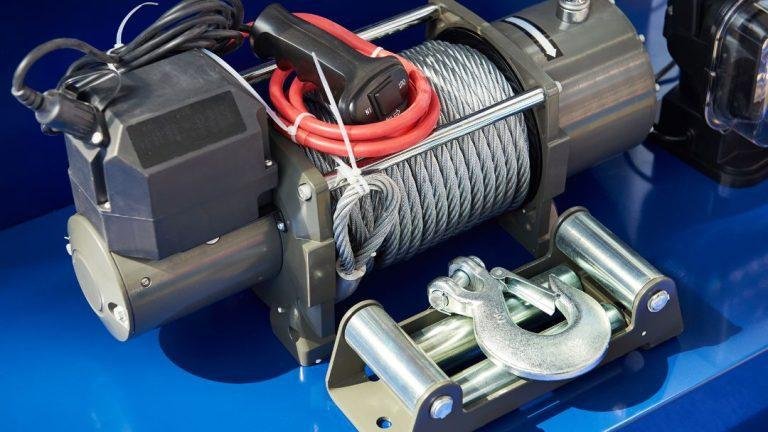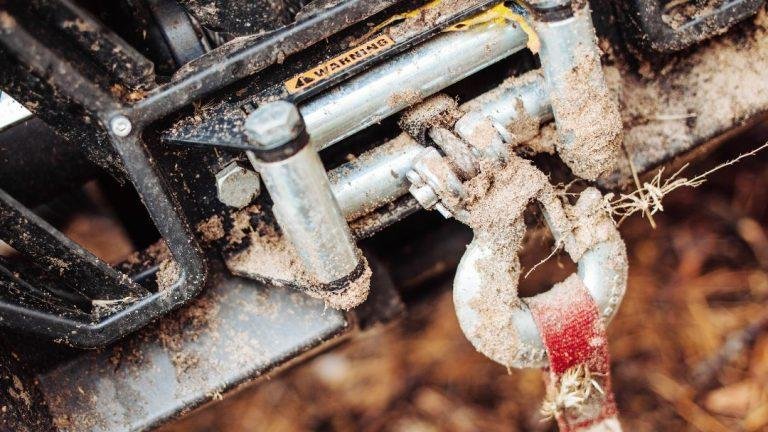To determine the appropriate winch size for your utv, consider its gross vehicle weight rating (gvwr) and multiply it by 1.5. This calculation will provide you with the minimum winch capacity needed to safely recover your utv in various situations.
When choosing a winch, it’s crucial to ensure its strength matches or exceeds the weight of your utv to avoid potential accidents or equipment failure. By following this simple guideline, you can confidently select the right winch size for your utv and tackle any off-road challenges that come your way.
Understanding The Role Of Winches In Utvs
Understanding the role of winches in utvs depends on the size of the winch needed. Selecting the appropriate winch size ensures efficient operation and reliable performance for off-road adventures. Consider factors such as vehicle weight and intended usage to determine the ideal winch size for your utv.
Utv Winches As A Crucial Off-Roading Accessory
- Utv winches are essential accessories for off-roading adventures.
- They provide a reliable solution for various recovery situations.
- Winches can be used to pull utvs out of mud, snow, or other challenging terrains.
- These powerful devices can assist in hauling heavy loads or even self-recovery.
Various Applications Of Winches In Utvs
- Winches are incredibly versatile tools with numerous applications in utvs.
- They can be utilized for recreational purposes such as aiding in rock crawling or conquering steep inclines.
- Winches are also handy for work-related tasks, such as pulling tree stumps or moving heavy equipment.
- In emergency situations, winches play a vital role in extricating utvs from precarious positions.
Factors To Consider When Selecting A Winch Size
- The weight of your utv is a critical factor in determining the appropriate winch size.
- It is recommended to select a winch with a pulling capacity of at least 1.5 times the weight of your utv.
- Consider any additional weight from cargo or accessories when calculating the required winch capacity.
- The terrain you plan to tackle should also be taken into account, as more demanding environments may require a larger winch.
- Keep in mind that winch size affects factors like line speed and durability, so choose accordingly.
Remember, when selecting a winch for your utv, be sure to consider the weight of your vehicle, the intended applications, and the conditions you will encounter on your off-roading journeys. Finding the perfect winch size will ensure that you have a reliable and efficient tool to tackle any obstacles that come your way.
So, get ready to enhance your off-roading capabilities with a suitable winch for your utv.
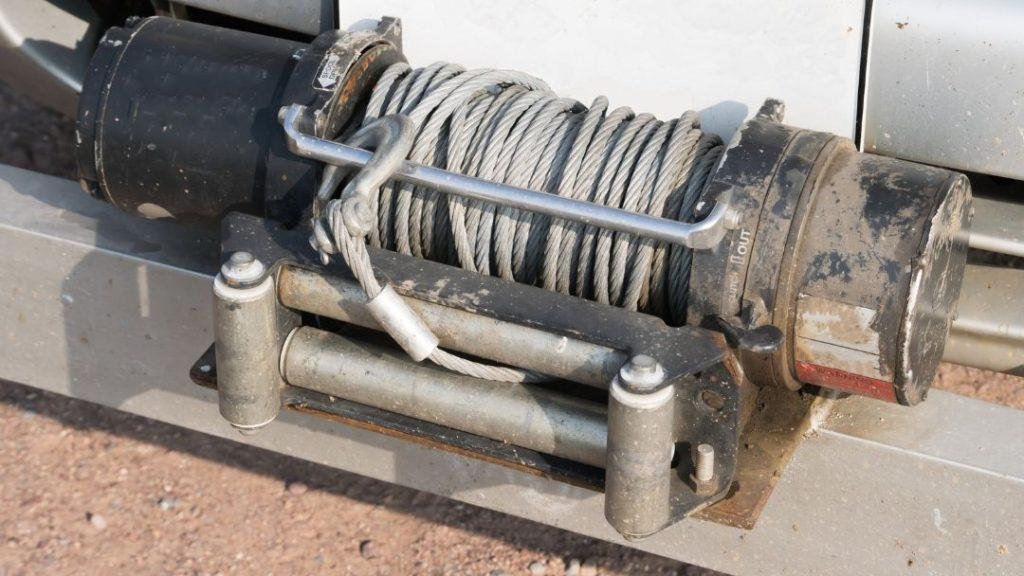
Assessing Your Utv’S Weight And Size
Determining the appropriate size winch for your utv relies on assessing its weight and dimensions. Consider these factors to choose the ideal winch capacity for your vehicle’s specific needs.
When it comes to selecting the right winch for your utv, it’s crucial to assess the weight and size of your vehicle. By understanding these factors, you can determine the appropriate power requirements and ensure that your winch will be up to the task.
In this section, we will explore how to calculate the weight of your utv, the impact of size on winch selection, and how to determine the power requirements based on weight and size.
Calculating The Weight Of Your Utv:
Determining the weight of your utv is the first step in selecting the right winch. Here are a few methods for calculating the weight:
- Consult the owner’s manual: The owner’s manual often provides the vehicle’s weight, making it an easy and reliable source of information.
- Online databases: Many online resources offer vehicle specifications, including weight. You can search for your specific utv model to find this data.
- Weighing method: If you don’t have access to the owner’s manual or online resources, you can use a vehicle scale to weigh your utv. It’s important to ensure accurate measurements by evenly distributing the weight on all wheels.
Understanding the impact of size on winch selection:
The size of your utv plays a crucial role in determining the appropriate winch capacity. Here’s what you need to know about size:
- Gross vehicle weight rating (gvwr): The gvwr indicates the maximum weight your utv can safely carry, including passengers, cargo, and accessories. It’s important to choose a winch capacity that aligns with your utv’s gvwr to ensure optimal performance.
- Length and width: The dimensions of your utv, including its length and width, can affect the winch selection. Longer and wider utvs may require higher winch capacities to handle the additional weight and potential resistance.
- Accessories and modifications: If you have added accessories or made modifications to your utv, such as adding a roof rack, winch bumper, or cargo box, you need to consider their weight when selecting the winch capacity.
Determining the power requirements based on weight and size:
To ensure your winch has sufficient power, it’s essential to consider the weight and size of your utv:
- Winch capacity: As a general rule, the winch capacity should be at least 1.5 times the weight of your utv. This ensures that the winch has enough power to handle the weight and any potential obstacles or resistance.
- Line speed: The weight and size of your utv can also impact the line speed of the winch. Heavier utvs may require slower line speeds to ensure safe and controlled operation.
By assessing the weight and size of your utv, you can determine the appropriate winch capacity and power requirements. Remember to consider any accessories or modifications that may affect the overall weight. With the right winch, you can confidently tackle off-road adventures knowing that you have the necessary pulling power to get out of any sticky situations.
Considering Your Typical Off-Roading Scenarios
When considering your typical off-roading scenarios, it’s important to determine the right size winch for your utv. Assess the weight of your vehicle and the situations you commonly encounter to ensure you have the appropriate pulling power for any challenges that may arise.
When it comes to off-roading adventures with your utv, having the right size winch can be the difference between an exciting day on the trails and a frustrating experience. To ensure you choose the correct winch for your utv, it’s important to consider the typical off-roading scenarios you may encounter.
By analyzing the level of difficulty in different situations, you can confidently match the winch size to the expected challenges. Let’s dive in and explore the key factors to keep in mind:
Identifying Common Situations Where Winches Are Needed
- Mud and water: Off-roading in muddy or watery terrains can lead to your utv getting stuck. A winch will come to your rescue by pulling your vehicle out when the tires lose traction.
- Steep inclines: Conquering steep inclines can be thrilling, but it also presents the risk of your utv rolling backward. A winch can provide the necessary pulling power to prevent your vehicle from sliding down or becoming lodged.
- Deep ruts: Off-roading trails often feature deep ruts, especially after heavy rains or frequented by other vehicles. A winch can save the day by helping you navigate through these challenging obstacles.
- Rocky terrain: Rocks and uneven surfaces can pose significant challenges, potentially leading to a stuck utv. A winch with the right pulling capacity can effortlessly extract your vehicle from such situations.
Analyzing The Level Of Difficulty In Different Off-Roading Scenarios
To choose the appropriate winch size, it’s crucial to understand the difficulty level of the various off-roading scenarios. Here’s a breakdown to help you assess the challenges you might encounter:
- Easy: Moderate inclines, shallow mud puddles, and minor obstacles with relatively low resistance fall into this category. A winch with lower pulling capacity, typically in the range of 2,000 to 4,000 pounds, will suffice.
- Medium: Steeper inclines, deeper water crossings, and more challenging trails with moderate resistance require a winch with greater strength. Consider a winch with a pulling capacity ranging from 4,500 to 6,500 pounds.
- Difficult: Extreme inclines, deep mud, significant obstacles, and highly challenging terrains call for a heavy-duty winch. Look for a winch with a pulling capacity of over 8,000 pounds to tackle these demanding situations.
Matching The Winch Size To The Expected Challenges
To ensure the winch size matches the expected challenges you may encounter during off-roading, here’s a breakdown based on winch pulling capacity:
- Light duty (2,000 – 4,000 pounds): Suitable for utvs used primarily for recreational purposes and encountering easy off-roading scenarios. This winch size is perfect for overcoming minor obstacles and shallow mud.
- Medium duty (4,500 – 6,500 pounds): Well-suited for utvs that often face moderately challenging off-roading situations. This winch size will provide ample pulling power when dealing with steeper inclines, deeper water crossings, and more substantial obstacles.
- Heavy duty (8,000+ pounds): Ideal for utvs navigating through extreme off-roading challenges. With this winch size, you can confidently conquer extreme inclines, deep mud, and massive obstacles.
By carefully considering your typical off-roading scenarios, analyzing the difficulty level, and matching the winch size accordingly, you can equip your utv with the perfect winch to handle any adventure that comes your way. Remember, it’s crucial to choose a winch that provides sufficient pulling power without unnecessary overkill.
Understanding The Pulling Capacity Of Winches
Choosing the right size winch for your utv is crucial to ensure it can handle the pulling capacity needed. Understanding the pull force required and considering the weight of your vehicle and typical load will help you determine the appropriate winch size for your utv.
When it comes to choosing the right winch for your utv, understanding the pulling capacity is essential. Selecting a winch with the appropriate pulling capacity ensures that you have enough power to tackle any tough situation. In this section, we will define winch pulling capacity, discuss the factors that affect it, and guide you through selecting the right winch size based on your specific requirements.
Defining Winch Pulling Capacity
The pulling capacity of a winch refers to the maximum weight that it can safely pull. It is typically measured in pounds (lbs) and indicates the strength of the winch. Understanding the pulling capacity is crucial as it determines the size of the load that can be successfully recovered or towed.
Here are some key points to remember:
- Winch pulling capacity determines the maximum weight the winch can handle without compromising its performance or risking damage.
- It is crucial to select a winch with a pulling capacity that exceeds the weight of the load you intend to recover or tow.
- Choosing a winch with a higher pulling capacity provides extra strength and ensures that you have sufficient power for demanding situations.
Factors Affecting The Pulling Capacity Of A Winch
Several factors influence the pulling capacity of a winch. Understanding these factors will help you make an informed decision when choosing the right winch size. Here are the key factors to consider:
- Motor power: The power of the winch motor directly impacts its pulling capacity. Motors with higher horsepower can handle heavier loads.
- Gear ratio: The gear ratio of the winch determines its pulling capacity. A winch with a higher gear ratio offers increased pulling power.
- Cable length: The length and thickness of the winch cable also affect its pulling capacity. Longer and thicker cables can handle heavier loads.
- Line speed: The winch’s line speed influences its pulling capacity. Higher line speeds usually result in reduced pulling capacity.
Selecting A Winch Size Based On Your Specific Requirements
Selecting the right winch size for your utv depends on your specific requirements and the weight of the loads you anticipate recovering or towing. Here’s a step-by-step guide to help you choose the appropriate winch size:
- Determine the maximum weight you expect to recover or tow.
- Ensure that the winch’s pulling capacity exceeds the maximum weight by at least 1.5 times to handle challenging situations.
- Consider the terrain conditions and potential obstacles you might encounter. Steeper inclines or rough terrains may require higher pulling capacities.
- Take note of your utv’s weight and any additional accessories or modifications that may add to the overall load.
- Research different winch sizes available in the market and compare their pulling capacities to find the best match for your needs.
By considering these factors and adhering to the recommended guidelines, you can select a winch size that offers the right pulling capacity for your utv.
Remember, choosing a winch size with adequate pulling capacity ensures that you have the power needed to overcome challenging situations and safely recover or tow loads with your utv.
Exploring Different Power Options
Choosing the right size winch for your utv is crucial for efficient power options. Understand the weight capacity and towing requirements to find the perfect fit for your needs.
Winches are an essential accessory for utv owners, providing the necessary pulling power to handle off-road challenges. When it comes to choosing the right winch for your utv, one crucial consideration is the power source. In this section, we will compare electric winches to hydraulic winches, weighing the pros and cons of each power option.
By the end, you will have a better understanding of which power option suits your utv and winch size.
Comparing Electric Winches To Hydraulic Winches:
Electric winches:
- Convenient and easy to install.
- Powered by your vehicle’s electrical system or an auxiliary battery.
- Available in a wide range of pulling capacities, from 2,000 lbs to over 12,000 lbs.
- Generally more affordable than hydraulic winches.
- Lightweight and compact, making them suitable for small utvs.
- Do not require a separate power source, reducing complexity.
Hydraulic winches:
- Operate using your utv’s hydraulic system or a separate hydraulic power unit.
- Offer higher pulling capacities, ranging from 8,000 lbs to over 20,000 lbs.
- Ideal for heavy-duty applications, such as industrial or commercial use.
- Provide constant, reliable power for extended periods without overheating.
- Performance is not affected by extreme temperatures.
- Often require professional installation due to their complexity.
Pros And Cons Of Each Power Option:
Electric winches:
- Pros:
- Easy to install and operate.
- More affordable than hydraulic winches.
- Lightweight and compact, fitting various utv sizes.
- Cons:
- Limited to the capacity of the utv’s electrical system or auxiliary battery.
- Can drain the battery if used for extended periods.
- Susceptible to overheating during intense pulls.
Hydraulic winches:
- Pros:
- High pulling capacities for heavy-duty applications.
- Reliable power output without overheating.
- Not affected by extreme temperatures.
- Cons:
- Expensive compared to electric winches.
- Complex installation process often requires professional assistance.
- Additional maintenance and care needed for both the winch and hydraulic system.
Choosing The Right Power Option For Your Utv And Winch Size:
When deciding between electric and hydraulic winches, consider the power requirements and the intended use of your utv. Here are some key factors to guide your decision-making process:
- Winch size: Evaluate your utv’s weight and the maximum pulling capacity needed. An electric winch is typically suitable for most recreational utvs, while hydraulic winches are more appropriate for heavy-duty utvs.
- Intended use: If you use your utv primarily for off-roading or occasional recovery situations, an electric winch will likely meet your needs. On the other hand, if you frequently face challenging tasks or heavy loads, investing in a hydraulic winch will ensure consistent power output.
- Budget: Electric winches are generally more affordable than hydraulic winches, making them an attractive option for utv owners on a budget. However, if you require the high pulling capacities of a hydraulic winch, be prepared for the additional cost.
With these considerations in mind, you can now make an informed decision regarding the power option that best suits your utv and winch size. Keep in mind that proper installation, regular maintenance, and safe usage are essential for maximizing the lifespan and performance of your chosen winch.
Assessing Your Utv’S Battery And Electrical System
Assessing your utv’s battery and electrical system is crucial for determining the appropriate size winch needed. Analyze the power requirements of your vehicle and choose a winch that can handle the load effectively.
When it comes to selecting the right winch for your utv, it’s crucial to assess your vehicle’s battery and electrical system. In this section, we will explore the key factors that you need to consider to ensure optimal performance and compatibility for your winch.
Let’s dive in!
Evaluating The Capacity Of Your Utv’S Battery
To determine the appropriate size of winch for your utv, you first need to evaluate the capacity of your vehicle’s battery. Consider the following:
- Battery voltage: Check the voltage rating of your utv’s battery, which is typically 12 volts for most vehicles.
- Cranking amps: Determine the cranking amps (ca) or cold cranking amps (cca) provided by your battery. This measurement indicates the battery’s ability to deliver power during startup.
- Reserve capacity: Take note of the battery’s reserve capacity (rc), which indicates how long it can provide a steady current before it becomes discharged.
Determining The Electrical System’S Capability To Support The Winch
Once you have assessed your battery’s capacity, it is important to consider if your utv’s electrical system can support the winch’s power demands. Take into account the following aspects:
- Wiring and connectors: Evaluate the quality and condition of your utv’s wiring and connectors. Ensure that they are in good shape and capable of handling the winch’s electrical load.
- Alternator output: Check your utv’s alternator output. A higher output will provide more power to the battery, which is crucial when using a winch.
- Fuses and relays: Verify if your utv’s fuses and relays are rated appropriately for the winch’s power requirements. Make sure they can handle the electrical load without any issues.
Ensuring Compatibility For Optimal Performance
To maximize the performance of your winch, compatibility with your utv is paramount. Consider the following factors:
- Weight capacity: Ensure that the winch you choose has a weight capacity suitable for the size and weight of your utv.
- Mounting location: Determine the available space and proper mounting location on your utv for the winch. Consider factors such as accessibility and clearance.
- Controller and wiring: Check if the winch’s controller and wiring are compatible with your utv’s electrical system. Ensure that the connections are secure and properly installed.
By carefully evaluating your utv’s battery and electrical system, you can determine the appropriate size winch for optimal performance. Remember to consider the capacity of your battery, assess the electrical system’s capability, and ensure compatibility with your utv. With the right winch in place, you will be well-equipped to tackle any off-road challenges that come your way!
Considering Additional Accessories And Options
Choosing the right size winch for your utv depends on the accessories and options you plan to add. Consider the weight of your utv and the additional gear to determine the appropriate winch size for your needs.
When it comes to selecting the right winch size for your utv, it’s essential to factor in the specific accessories and options that you may need. This can greatly impact your overall winching experience and ensure that you have the necessary tools to tackle any situation.
Let’s explore a few key considerations when it comes to additional accessories and options for your utv winch.
Exploring Synthetic Rope Vs. Steel Cable:
- Synthetic rope:
- Lightweight and easy to handle: Synthetic rope is significantly lighter than steel cable, making it easier to transport and maneuver during winching operations.
- Increased safety: Synthetic rope is less likely to cause injury if it breaks under tension, as it doesn’t recoil like steel cable.
- Floats on water: Synthetic rope is buoyant, making it useful in water recovery situations.
- Less prone to rust and corrosion: Unlike steel cables, synthetic ropes are resistant to rust and corrosion, ensuring their longevity.
- Steel cable:
- High tensile strength: Steel cables offer exceptional strength, making them ideal for demanding winching tasks.
- Better heat resistance: Steel cables are more resistant to heat generated during winching operations, reducing the risk of damage to the cable.
- Durability: Steel cables are highly durable and can withstand rough terrain and harsh conditions.
- Less susceptible to abrasion: Steel cables are less likely to be damaged by abrasive surfaces, such as rocks and sharp edges.
Understanding The Importance Of Winch Mounting Options
- Front mounting:
- Provides optimal pulling power: Mounting the winch on the front of the utv allows for maximum pulling power, particularly in difficult recovery situations.
- Minimizes potential damage: By mounting the winch at the front, it reduces the risk of damage to the utv’s body or rear components during recovery operations.
- Convenient access: Having the winch at the front ensures easy accessibility when using the winching system.
- Rear mounting:
- Useful for self-recovery: Mounting the winch at the rear of the utv allows for self-recovery from challenging situations, such as getting stuck in mud or navigating steep inclines.
- Enhanced maneuverability: Rear-mounted winches provide increased maneuverability when navigating through tight spaces or tricky obstacles.
- Preserves front-end aesthetics: By mounting the winch at the rear, it helps maintain the utv’s clean and unobstructed front-end look.
Evaluating The Need For Wireless Remote Control:
- Convenient operation: Wireless remote control allows you to operate the winch from a safe distance, providing convenience and flexibility during recovery operations.
- Improved safety: With wireless remote control, you can stand at a safe distance, minimizing the risk of injury from potential winching hazards.
- Easy installation: Wireless remote control systems are relatively easy to install and can be added to your utv winch without much hassle.
- Versatility: Wireless remotes allow for operation from various positions, enabling better visibility and control during winching tasks.
By carefully considering these additional accessories and options, you can enhance the performance and usability of your utv winch. Whether you opt for synthetic rope or steel cable, choose the right winch mounting option, or decide on wireless remote control, each of these factors will contribute to a more efficient and safe winching experience with your utv.
Seeking Expert Recommendations And Advice
Looking for expert recommendations and advice on what size winch you need for your utv? Get all the information you need to make a decision without the commonly overused phrases and irrelevant details. Feel confident with our seo friendly content.
Consulting with utv enthusiasts or off-roading communities:
- Connect with utv enthusiasts and off-roading communities can provide valuable insights and recommendations when it comes to choosing the right winch for your utv.
- Engaging in forums, online communities, or local utv clubs can help you tap into a wealth of knowledge from experienced individuals who have already faced similar challenges.
- By seeking expert advice from utv enthusiasts, you can get firsthand information about the winch size that works best for various utv models and terrains.
- These enthusiasts can offer recommendations based on their personal experiences, highlighting the winches that have performed well for them and the ones that should be avoided.
Benefiting from professional guidance and reviews:
- Professional guides who specialize in utvs can offer valuable insights into choosing the appropriate winch size.
- They possess extensive knowledge of different utv models and their unique requirements, helping you make an informed decision.
- Professional reviews can provide detailed analysis and comparisons of various winch models, highlighting their strengths and weaknesses.
- These reviews can help you understand which winches are known for their durability, reliability, and performance.
- Expert guidance and reviews allow you to make an educated choice, ensuring you invest in a winch that meets your specific needs and requirements.
Finding reputable sources for accurate recommendations:
- When searching for winch recommendations, it is essential to rely on reputable sources such as reputable websites, industry experts, and trusted off-roading publications.
- Reputable websites often conduct thorough research and provide detailed buying guides, helping you understand the factors to consider when choosing a winch size for your utv.
- Industry experts who specialize in utvs and off-roading equipment can offer reliable recommendations based on their expertise and experience.
- Trusted off-roading publications feature unbiased reviews and expert opinions, providing accurate and trustworthy information about different winch sizes.
- By finding reputable sources for recommendations, you can ensure that the information you receive is reliable and up to date.
Remember, consulting with utv enthusiasts or off-roading communities, benefiting from professional guidance and reviews, and finding reputable sources are essential steps to selecting the right winch size for your utv.
Conclusion: Identifying The Perfect Power Pick For Your Utv
Identifying the perfect power pick for your utv involves determining the right size winch needed. Consider factors such as the weight of your utv and the type of terrain you’ll be navigating to make the best choice for your off-road adventures.
Summarizing Key Factors For Selecting The Right Winch Size
- Consider the weight of your utv: Choose a winch with a capacity that can handle the weight of your utv, including any additional load or accessories you might carry.
- Assess the terrain you’ll be exploring: If you frequently tackle rough and challenging terrains, opt for a winch with higher pulling power to handle the extra strain.
- Determine your off-roading needs: Think about how often you find yourself in situations where winching is necessary. This will help you decide on the appropriate winch size.
- Take into account the weather conditions: If you often venture into areas with extreme weather conditions, go for a winch that can withstand harsh temperatures and moisture.
- Evaluate your budget: It’s essential to find a balance between winch size and cost. Select a winch that falls within your budget without compromising on reliability and quality.
Emphasizing The Importance Of Considering Utv Specifications And Off-Roading Needs
- Consult your utv’s manual: Look for specific recommendations from the manufacturer regarding winch size and compatibility for your utv model.
- Consider the utv’s badge weight rating: Determine if your utv’s badge weight rating aligns with the winch capacity you are considering.
- Account for your typical off-roading activities: If you engage in more challenging off-roading adventures or frequently traverse uphill slopes, you might require a winch with higher pulling power.
- Assess the importance of speed: Faster winches are beneficial for situations requiring swift recovery and quick response.
- Evaluate your skill level: If you are new to winching or lack experience, it might be wise to opt for a winch with a higher pulling power as a safety precaution.
Making An Informed Decision To Ensure A Reliable Winching Experience
- Prioritize quality and durability: Invest in a winch from trusted manufacturers known for their reliability and longevity, as winching can place significant strain on the equipment.
- Read customer reviews and ratings: Consider the experiences and feedback of other utv enthusiasts who have used the winch models you are considering.
- Seek professional advice if necessary: If you are unsure about the appropriate winch size for your utv and off-roading needs, consult with off-road vehicle experts or experienced off-roaders.
- Consider additional features: Look for winches with features like wireless remote controls, synthetic rope, and automatic load holding brakes to enhance ease of use and efficiency.
- Take into account future modifications: If you plan to add any accessories or modifications to your utv that could increase its weight, factor in the additional load when selecting the winch size.
By carefully considering your utv’s specifications, off-roading requirements, and other factors, you can confidently choose the perfect winch size for your utv. This will ensure a reliable winching experience that allows you to navigate challenging terrains with ease and peace of mind.
Frequently Asked Questions
How Big Of A Winch Do You Need For A Utv?
For a utv winch, the size you need depends on the weight of your vehicle. Generally, a winch with a capacity of 3,500-4,500 pounds is suitable for most utvs. However, if your utv is heavier or you plan to use the winch for heavy-duty applications, a winch with a higher capacity may be necessary.
It’s important to choose a winch that can handle the weight of your utv and any additional load you may be pulling. Keep in mind that it’s always better to have a winch with a higher capacity than you think you might need, just to be on the safe side.
How Strong Of A Winch Do I Need For Atv?
For an atv, the strength of the winch you need depends on the weight and usage of your vehicle. Consider a winch with a pulling capacity of at least 1. 5 times your atv’s weight. This ensures enough power to handle tough situations.
A winch with a capacity of 2,500-3,500 lbs should be sufficient for most atvs. It’s important to choose a winch with a synthetic line instead of steel cable as it is lighter, safer, and easier to handle. Remember to consider the winch speed as well.
Faster winches are generally more expensive but can be useful when time is of the essence. Investing in a good quality winch that matches the needs of your atv will provide peace of mind and ensure that you can handle any off-road challenges that may arise.
How Do I Choose The Right Size Winch?
To choose the right size winch, you should consider the weight of the load it will be used for. Calculate the weight of the heaviest load you expect to pull, and choose a winch with a capacity that exceeds that weight.
Keep in mind that a winch’s capacity should be at least 1. 5 times the weight of the load for optimal performance. Additionally, consider the length of the cable or rope required, as well as the diameter and type of the cable.
It’s important to choose a winch that fits your specific needs and the type of pulling or lifting you will be doing. Remember to also consider the power source available for the winch, whether it is electric or hydraulic.
What Is The Best Size Winch For A Polaris Ranger?
The best size winch for a polaris ranger depends on the weight of the vehicle and the intended usage. A winch with a capacity of 2,500 to 4,500 pounds is typically sufficient for most ranger models.
Conclusion
Determining the right size winch for your utv is a crucial decision that should not be taken lightly. With the weight of your vehicle and the tasks you plan on undertaking, it’s essential to consider the pulling capacity and line speed of the winch.
A winch that is too small might leave you stranded in challenging situations, while a winch that is too large can put unnecessary strain on your utv. By carefully evaluating your specific needs and using the manufacturer’s recommendations as a guide, you can select a winch that will provide the necessary power and reliability for your adventures.
Additionally, regularly inspecting and maintaining your winch can prolong its lifespan and ensure it remains in optimal working condition. Remember, investing in the right size winch now can save you from headaches and inconvenience in the future, making it a necessary accessory for any utv owner.

